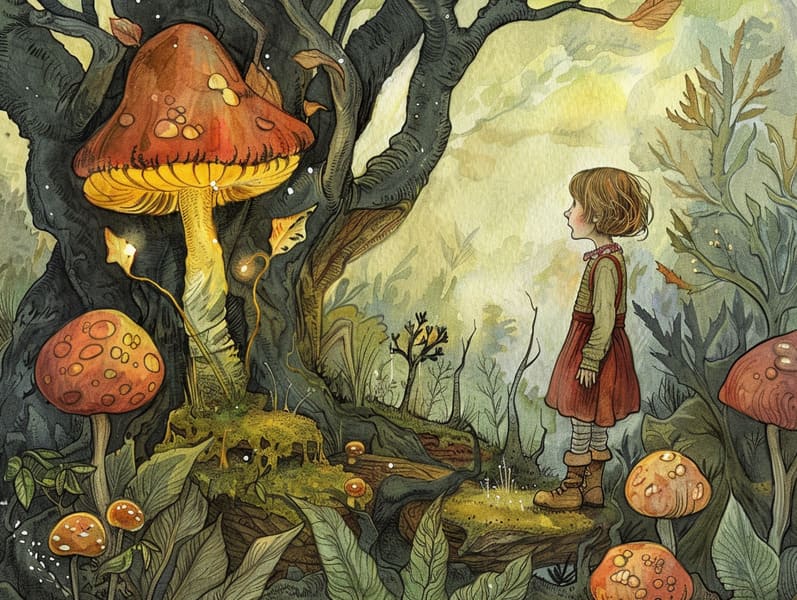Appreciating the Charm of Sleepy-time Fairy Tales: Developing Treasured Times with Your Children
Appreciating the Charm of Sleepy-time Fairy Tales: Developing Treasured Times with Your Children
Blog Article

Nighttime is a special time for caregivers and children. It’s a moment to relax, cuddle up, and experience the joy of stories.
For centuries, stories for kids at bedtime have been a beloved custom, offering more than just a way to drift off. They provide an opportunity for bonding, learning, and sparking creativity.
Why Bedtime Stories Matter
Nightly tales for children are more than just a way to wrap up the day. They play a key role in a child’s growth and in reinforcing the parent-kid link. Here’s why they are beneficial:
1. Connection Time: Storytime before sleep builds a special period of closeness between families. It’s a moment of intimacy that helps children feel important and safe.
2. Speech Improvement: Hearing tales helps children develop their language acquisition. They learn new vocabulary, understand grammar, and boost their listening and interpretative skills abilities.
3. Imaginative Skills: Bedtime tales move them to enchanted worlds, encouraging vision. They see characters, settings, and adventures, which sparks their creative thinking.
4. Emotional Skills: Children’s stories often showcase characters facing trials and emotions. These stories help kids comprehend and work through their own moods, fostering emotional skills.
5. Thinking Skills: Listening to a tale helps children develop attention span, recollection, and reasoning skills. They improve to follow tales, remember details, and anticipate results.
Incorporating Stories into Bedtime
Creating a bedtime routine that incorporates reading narratives is doable and rewarding. Here’s how to make it a cherished part of your nightly tradition:
1. Pick a Snuggly Spot: Select a peaceful place where you and your child can huddle together without disruptions. A comfy bed or a relaxing reading nook works wonderfully.
2. Establish a Routine Time: Set a routine time each night for tales. Dependability helps children predict and makes the custom easier to follow.
3. Pick Age-Suitable Stories: Choose tales that fit your child’s understanding. Little kids might appreciate easy books with basic stories, while elementary kids may like complex plots with more involved stories.
4. Interact with the Story: Try to the tale be immersive by adding different accents and voices, adding special sounds, and motivating your child to join in. Ask points about the story to keep them listening.
5. Make a Calm Setting: Lower the lights, use calm voices, and create a quiet environment to help your child calm down.
Sources for Bedtime Stories
There are varied places to look where you can find excellent bedtime stories for children. Here are some choices to check out:
1. Kids’ Books: Try your closest library or bookstore to find a wide selection of bedtime stories for kids. Perusing the books together can be a wonderful activity that also allows children to select stories that they like.
2. Internet Sources: There are many online platforms that offer free bedtime stories. Sites like Storynory provide a variety of short stories for kids that you can get for free. These platforms are great for finding new and interesting stories without payment.
3. Audio Books and Story Apps: For nights when you’re too drained to read, explore audiobooks or storytelling apps. These can provide a soothing voice read more to read your child a story, ensuring they still get their bedtime story fix. Apps often offer interactive aspects that can involve them further.
4. Custom Stories: Design your own stories fitting your child’s hobbies. Personalized stories can be incredibly engaging and meaningful. You can get your child in the writing process, making them a part of the adventure.
Why Short Stories Are Effective
Quick stories for bedtime are extremely effective for bedtime. They provide all the positives of longer stories but are more to the point, making them perfect for getting ready for bed before sleep. Here’s why short stories are a perfect choice:
1. Simple to Understand: Concise narratives are uncomplicated and clear for little ones to understand, even after a long day. They can easily grasp the theme and enjoy the story without getting bored.
2. Fast Engagement: Quick narratives immediately engage children, catching their interest and creativity. This makes them excellent for keeping bedtime traditions manageable yet enjoyable.
3. Diverse Options: Concise narratives offer for variety in your bedtime narrative. You can choose a different story each night, keeping the routine engaging and exciting for your child.
4. Time Management: For busy parents, short stories are a easy way to confirm children still get their nightly dose of storytelling. They fit well into a tight schedule while still offering the full plusses of a bedtime story.
The Allure of "Read Me a Story"
The simple phrase, “Read me something,” can reveal a world of magic for children. Saying yes to this request not only addresses a child’s desire for attention and engagement but also creates lasting memories. Here’s why it’s amazing:
1. Link: Narrating to your child creates a deep emotional connection. It’s a time for attachment, sharing, and bonding.
2. Ritual: Establishing a bedtime story custom creates a cherished tradition that children wait for every night. It’s a tradition that can be transferred through generations.
3. Development Together: As you read, you’ll observe your child’s maturation and development. Their reactions, reactions, and understanding of the stories develop, offering insights into their developing minds.
4. Protective Space: Bedtime stories provide a safe space for children to explore emotions, face fears, and find comfort in the known presence of a parent.
To Finish
Nightly tales for children are a valuable tool for fostering a child’s growth and crafting unforgettable experiences of closeness.